#nyscanyfafellowship
Text
The Art of the Application | Representing Your Artwork Online

Let your work speak for itself clearly and successfully.
Work Samples are an integral part of every NYSCA/NYFA Artist Fellowship application. Read on for tips to consider when putting together your portfolio for submission.
Documenting Your Work:
Before documenting your work, think about what aspects you want to highlight for the review panel. Perhaps it’s your use of materials or the fine details within your work. Make sure you have documentation that captures these elements clearly.
Before photographing your artwork, review the environment surrounding the object. Remove any unwanted items that may be surrounding your artwork as this will distract the panel from your art.
For Literary works that are excerpts from a larger body of work, choose the sections you feel can stand on their own with limited context needed (though you can provide some context through your Excerpt Explanation).
If you are submitting documentation of an interactive piece, take the time to capture it in a way that shows how you would expect the viewer to interact with your work.
Make sure that your artworks are in the correct file format listed in the Visual Arts, Literary, or Media Guidelines or else they will not successfully upload to your application.

Curating Your Work Samples:
Before uploading your work, consider the order that you want each work to be viewed, remembering that the panel will review work in the order in which they are submitted.
If you are uploading more than one body of work, make sure that the corresponding works are grouped together.
Literary works should include a title page with a table of contents indicating any breaks in your document.
Upload only your strongest works. You are not required to submit the maximum number of files or page for your application if you feel that your work can be better represented through fewer works.
Key Questions to Consider:
How would I want the panel to experience my body of work in person and how can I best capture this?
Are there any details of my work that I want to bring to the panel’s attention?
Which format (video or still images) will best showcase my work?
-Eleysha Sajous, Program Associate, NYFA Grants
The current NYSCA/NYFA Artist Fellowship application cycle closes on January 22, 2020. For more information about the NYSCA/NYFA Artist Fellowship, visit our website and view our Fellowships FAQ. NYSCA/NYFA Artist Fellowships are administered with leadership support from New York State Council on the Arts with the support of Governor Andrew M. Cuomo and the New York State Legislature.
Find out about additional awards and grants here. Sign up for our free bi-weekly newsletter NYFA News to receive announcements about future NYFA events and programs.
Images from top: Donna Uchizono (Fellow in Choreography ’19), State of Heads, 1999; Blane De St. Croix (Fellow in Architecture/Environmental Structures/Design ’19), High Peaks, 2017
#application tips#applicationtips#artist opportunities#artistopportunities#nyscanyfafellowship#nysca nyfa fellowship#art of the application#artoftheapplication#announcements#instagram#business of art#businessofart
1 note
·
View note
Text
The Art of the Application | Work Statements and Cultural Statements

We’re sharing insider tips for your NYSCA/NYFA Artist Fellowship Application.
The NYFA Grants team has created a series of blog posts with information to help you prepare the materials needed for your application(s). In this edition of The Art of the Application, we’ll share tips on writing a Work Statement and guidance in helping you decide if you should include a Cultural Statement.
How Do I Write a Work Statement?
This may be a new term to you, but the concept will be familiar. The Work Statement is like an Artist Statement, in that it should describe the primary interests of your practice. Whereas an Artist Statement is often broad and overarching, your Work Statement needs to be specific to the work you are presenting within your application.
Your NYSCA/NYFA Artist Fellowship Work Statement can be up to 100 words in length and is required. It may seem daunting to distill your work down to 100 words or less, but trust that it’s a worthwhile challenge! However, be mindful when you condense your statement into a short format; don’t let your ideas devolve into vague sentences or generalizations. Instead, hone in on some of the key factors that inspired the work in your application, and describe how these elements relate to some of the larger ideas within your artistic practice.
As an exercise, consider this question: How would you explain your work to someone who has never experienced it before?
Keep it simple. It’s best to avoid language that is overly theoretical or philosophical. You don’t want to make your statement so complex that someone has to read it two or three times in order to understand it. Keep in mind that the panel is reviewing hundreds of Work Statements. Statements that speak clearly and provide concrete examples allow the panel to access your ideas more quickly. And remember, with only 100 words, you should never stop at the first draft!
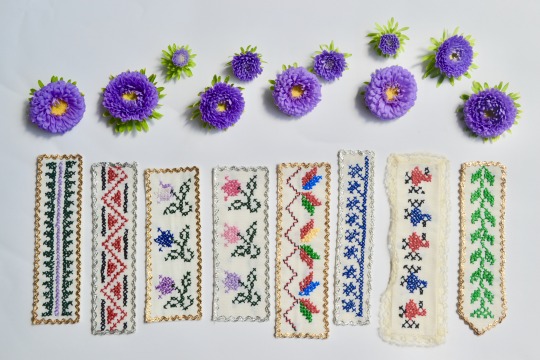
Should You Supply a Cultural Statement?
Another aspect of the NYSCA/NYFA Artist Fellowship application is the Cultural Statement. This statement gives applicants the opportunity to describe how their practice relates to, or is rooted in, a cultural technique, tradition, or community.
The Cultural Statement should give the panel insight into a specific cultural community or practice, and highlight any techniques that may need further context.
Describe how your background in a cultural community has shaped your work.
Share any relevant cultural history or stories that influenced your work.
Provide more detail about the techniques you use, where they originated, and why you choose to continue this tradition.
It’s good to take advantage of any opportunity an application gives you to describe your work, but you should only submit information that is appropriate to your practice. Supply a Cultural Statement only if your connection to a cultural community, technique, and/or tradition is integral to your work. If not, don’t spend your time trying to argue an angle. Instead, focus your attention on strengthening other components of your application. Keeping your materials relevant, informative, and focused is key when submitting an application to an artist opportunity in general.
Depending on the discipline you’re applying in, you may have the opportunity to also provide a Technical Statement and/or Excerpt Explanation. These statements will allow you to go into further detail, so don’t feel like you have to say everything in your Work Statement or Cultural Statement.
For more information about the NYSCA/NYFA Artist Fellowship, visit our website and view our Fellowships FAQ.
- Hannah Berry, Program Associate, NYFA Grants

NYSCA/NYFA Artist Fellowships are administered with leadership support from New York State Council on the Arts with the support of Governor Andrew M. Cuomo and the New York State Legislature.
Find out about additional awards and grants here. Sign up for our free bi-weekly newsletter NYFA News to receive announcements about future NYFA events and programs.
Images, from top: Ginny Casey (Fellow in Painting ‘18), Balancing Act, 2017, oil on canvas; Wafa Ghnaim (Fellow in Folk/Traditional Arts ‘18), Floral Bookmarks, 1988-2001, cross-stitch on fabric
#application tips#applicationtips#artist opportunities#artistopportunities#nyscanyfafellowship#nysca nyfa fellowship#nysca nyfa artist fellowship#art of the application#artoftheapplication#hannah berry#WorkStatements#instagram#business of art
6 notes
·
View notes
Text
The Art of the Application | NYSCA/NYFA Artist Fellowship Application Feedback
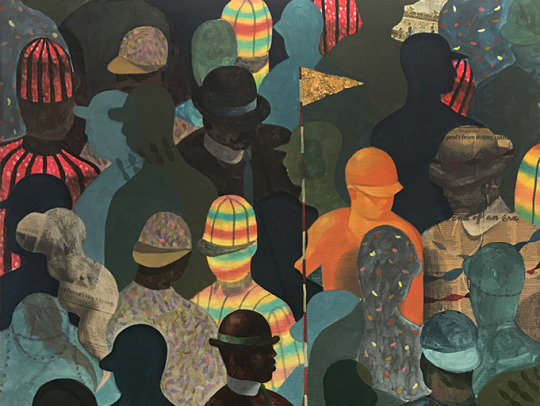
Here are tips for making your next grant application stand out from the crowd, courtesy of the NYFA Grants team.
For the 2017/2018 application cycle alone, The New York Foundation for the Arts (NYFA) received a total of 3,071 applications for the NYSCA/NYFA Artist Fellowship. In total, we reviewed 12,100 pages of manuscript, nearly 19,710 images, and more than 1,980 minutes of video excerpts! Due to the high volume of applications we received, in this cycle and in others, we are unable to give applicants individual feedback. However, we wanted to provide some general insights gained from our panel review process to help you with future grant opportunities.
Start your work samples off strong!
If you’re submitting images, choose one of your strongest works as your first image. During the NYSCA/NYFA Artist Fellowship panel, the moderator reads aloud the title, date, and dimensions of your 1st and 6th images. If you decide to present two bodies of work, the 6th image is a good place to introduce the second series. For literary artists, manuscripts should begin with a paragraph that creates a strong sense of place or character, and does not necessarily have to be from the first page of your writing. If you are working in video/film or audio, your excerpts will be reviewed first, so make sure they start exactly where you want panelists to begin watching or listening.
Take time to document your work.
Your work sample is only as strong as your documentation. Make sure your work samples properly and professionally portray your work. Images that include unnecessary background clutter are distracting. Hang a painting on the wall to document it and leave space around a piece so the image shows the edges of the work. If possible, ask a friend or hire a professional photographer to document your work for you. If you’re an Interdisciplinary artist working in a time or movement-based practice, be sure to submit video/audio work samples alongside your images so that the panel can get a real sense of your work. If your work is an installation or is interactive, use enough work samples to convey the scope of the project.
More is not necessarily better.
Panelists often comment that applications that cram in too much actually detract from the stronger works. The panel wants to see a cohesive application with work that shows integrity, conviction, and a clear vision. We recommend applicants do not include more than 2 or 3 projects or series in their applications. You do not need to reach the work sample limit if you feel your work is represented well with fewer pages, images, videos, etc.
Your supporting statements should be as strong as your work samples.
Panelists are usually most taken with applications that show strength in overall presentation of the work, including the statements. Statements should be original and specific to the application to which you are applying. Be clear and concise, and avoid using language that is overly theoretical, poetic, or experimental. Use as much space as you need, but again, less may be more. It is better to have a shorter statement than to stretch the full word count by going off topic, repeating ideas, or speaking about work that isn’t in your application.
Provide additional information if allowed.
If an application allows you to add titles and descriptions to your work samples, you should. A well-used title or material description can sometimes be the thing that gives a panelist an “ah-ha” moment, and helps move an application into the next round. The additional information section is also your opportunity to briefly note any elements that may not be apparent in the work samples themselves, and which will give the panel more context for understanding your work.
Give yourself plenty of time to upload your work samples and submit your application.
Though NYFA considers every application for review, panelists will quickly disregard applications where the videos didn’t properly upload, images were too small or terribly pixelated, or the wrong manuscript was uploaded.
Make sure to check for spelling and grammatical errors before you submit.
A simple mistake can be detrimental to your application. Have a friend or colleague read through your manuscript and/or support statements before you submit.
Try not to get discouraged.
Applying for arts opportunities and funding is a practice in itself, and is often as much a part of being an artist as being in the studio. Keep in mind that panels are always changing, and every year offers a new opportunity. The majority of artists apply multiple times before receiving not only the NYSCA/NYFA Artist Fellowship, but most awards or grants. Just because you were not selected for an award doesn’t mean your application wasn’t strong or that your vision isn’t worth pursuing. As Sejal Shah, a 2018 Fellow in Fiction, said:
“If your stories are like mine, they might be described as non-traditional, experimental, and poetic. You might start to doubt that what you do has relevance, that it is understood, and worth reading. It doesn’t fit neatly into a category. The news about the NYSCA/NYFA Artist Fellowship came after I had received a few rejections in a row for other things. I mentioned this string of rejections to a friend, and she said whenever that happens to her, it means there’s a big yes around the corner. It turned out that was true in this case.”
- Hannah Berry, Program Associate, NYFA Grants
Find out about additional awards and grants here. Sign up for our free bi-weekly newsletter NYFA News to receive announcements about future NYFA events and programs.
Image: Derek Fordjour (Fellow in Painting ‘18), Rally Finale, 2017, oil, acrylic, graphite, newspaper, and foil on wood panel
#application tips#applicationtips#artist opportunities#artistopportunities#nyscanyfafellowship#nysca nyfa fellowship#nysca nyfa artist fellowship#nyscanyfaartistfellowship#art of the application#artoftheapplication#instagram#business of art
2 notes
·
View notes
Text
The Art of the Application | Advice from 2019 NYSCA/NYFA Artist Fellowship Panelists
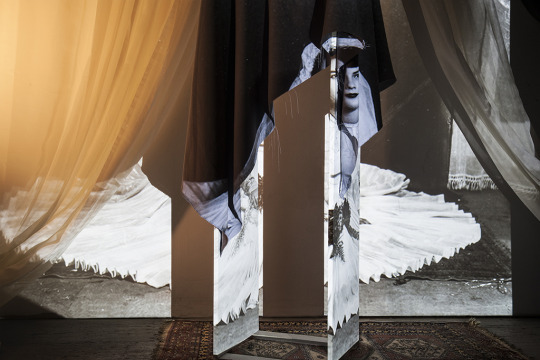
Key takeaways from each of 2019′s review panels to help you with future applications.
In 2019, NYFA received more than 2,500 NYSCA/NYFA Artist Fellowship applications across the disciplines of Architecture/Environmental Structures/Design, Music/Sound, Choreography, Photography, and Playwriting/Screenwriting. While we are unable to provide individual feedback based on the tremendous response, we have summarized general feedback from our panelists and provided a few specific takeaways from each discipline.
General Comments:
Panelists agreed that the order in which work samples were presented made for a strong first impression. So think about how you are ordering the samples and what you want them to communicate about you as an artist.
Ensuring images were in focus and framed well and audio/video excerpts started at the climax of each piece was a plus.
Less is more! Applications that presented two to three bodies of work made more of an impact than applications highlighting more than four bodies of work.
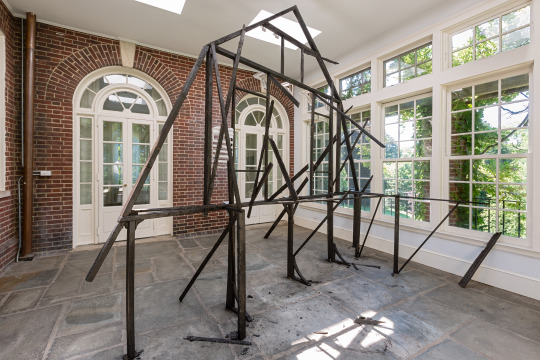
Discipline-Specific Feedback:
Architecture/Environmental Structures/Design:
Make sure images are clear of foreign objects or distractions.
Show the scale of your work.
Consider the way your work samples are being reviewed; images of detailed presentation boards do not translate well in a fast-paced review environment. Stick to highlighting certain aspects of your design in individual images.
Music/Sound:
Make sure your submitted recordings are the final version; out-of-tune instruments stand out like a sore thumb!
Use your metadata. Make sure you tell the panel where the climaxes are in your work and what instruments/techniques you are using to create your sounds.
If you have a music score, include it, and highlight where your selected excerpts fall.
Choreography:
For submissions of full-length performances, make sure you indicate breaks or intermissions in your metadata or edit them out.
Invest time and effort into making quality recordings of your performances.
Not all performances provide the same experience when not viewed live, so make sure you give insight into how the work is to be experienced in your Technical statement.
Photography:
Number your works correctly before uploading them so that they are viewed in the order you would like panelists to see them.
Make sure to document your work only and not the work of others in installation shots. Be mindful of what other objects are in the frame.
Aim for depth, not breadth. Avoid including too many bodies of work.
Playwriting/Screenwriting:
Focus on quality over quantity—you don’t need to submit the maximum 20 pages.
Not all written works can shine in just 20 pages. Select works that move quickly and can be understood without the panel having to know too much of the backstory.
The beginning of the script might not always be the best place to start, so start at a place that will capture the panelists on the first page!
Submit completed works to ensure your are showcasing your best work.
Final Reminders!
The panel review process is thorough, but quick. So make sure you are presenting your strongest works.
Share your story to make a connection.
Title your work samples! This can help panelists understand you, your story, and what you are presenting.
Curate your work samples.
Submit completed recent works.
Tell a consistent story through your application in both your written statements and visuals.
SUBMIT BEFORE THE CLOSING DATE!
Good luck!
The next NYSCA/NYFA Artist Fellowship application cycle begins on September 24, 2019. For the discipline categories listed above, the next application cycle will open in Fall 2021. For more information about the NYSCA/NYFA Artist Fellowship, visit our website and view our Fellowships FAQ. NYSCA/NYFA Artist Fellowships are administered with leadership support from New York State Council on the Arts with the support of Governor Andrew M. Cuomo and the New York State Legislature.
Find out about additional awards and grants here. Sign up for our free bi-weekly newsletter NYFA News to receive announcements about future NYFA events and programs.
Images: Rehan Miskci (Fellow in Photography ’19), Hollow, 2015, and Sonya Blesofsky (Fellow Architecture /Environmental Structures/Design ’19), Afterimage, 2017
#application tips#applicationtips#artist opportunities#artistopportunities#nyscanyfafellowship#nysca nyfa fellowship#art of the application#artoftheapplication#announcements#instagram#business of art#businessofart
0 notes
Text
Introducing | NYSCA/NYFA Artist Fellowship Program Recipients and Finalists
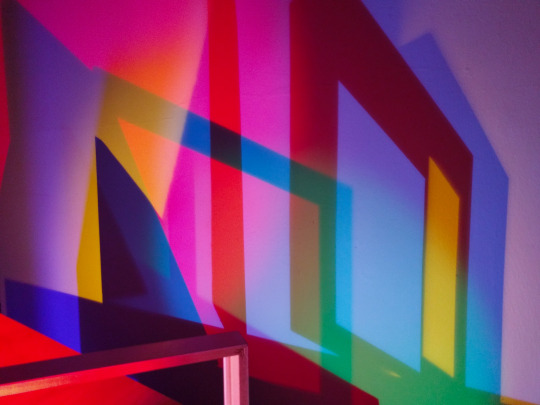
NYFA has awarded $661,000 to 98 New York State artists working in the categories of Architecture/Environmental Structures/Design, Choreography, Music/Sound, Photography, and Playwriting/Screenwriting.
New York Foundation for the Arts (NYFA) has announced the recipients and finalists of the NYSCA/NYFA Artist Fellowship Program, which it has administered for the past 33 years with leadership support from the New York State Council on the Arts (NYSCA). The organization has awarded a total of $661,000 to 98 artists (including three collaborations) whose ages range from 25-76 years throughout New York State in the following disciplines: Architecture/Environmental Structures/Design, Choreography, Music/Sound, Photography, and Playwriting/Screenwriting. Fifteen finalists, who do not receive a cash award but benefit from a range of other NYFA services, were also announced. A complete list of the Fellows and Finalists follows.
The NYSCA/NYFA Artist Fellowship Program makes unrestricted cash grants of $7,000 to artists working in 15 disciplines, awarding five per year on a triennial basis. The program is highly competitive, and this year’s recipients and finalists were selected by discipline-specific peer panels from an applicant pool of 2,542. Since it was launched in 1985, the program has awarded over $31 million to more than 5,000 artists. This year, thanks to the generous support of photography nonprofit Joy of Giving Something, NYFA was able to award an additional five Fellowships in Photography, which has the largest application pool of any Fellowship category.
“We are grateful to NYSCA for this annual opportunity to provide nearly 100 artists from New York State with unrestricted cash grants,” said Michael L. Royce, Executive Director, NYFA. “What’s most exciting is that the Fellowship impacts artists of all disciplines and career stages and that these artists are being recognized by a jury of their peers. Beyond the financial aspect, it empowers them to keep creating and exploring new possibilities in their work.”
New York State Council on the Arts Executive Director Mara Manus described how the program makes New York communities more vibrant: “The NYSCA/NYFA Artist Fellowship recognizes that artists of all disciplines, backgrounds, ages, and career stages make vital contributions to New York’s creative culture. Over the past 33 years, the Artist Fellowship has been a launching pad and a critical source of support for artists whose work helps build healthy communities in all regions of the state.”
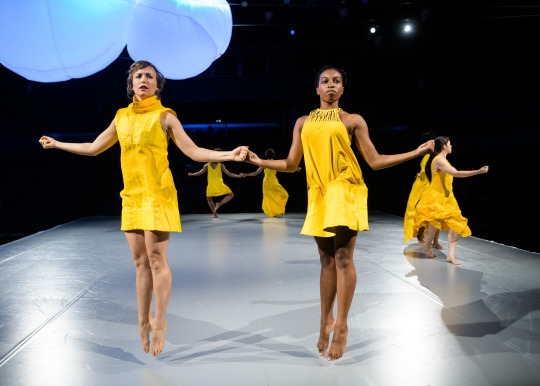
On receiving a NYSCA/NYFA Artist Fellowship in Playwriting/Screenwriting, Brooklyn-based Nabil Viñas said: “It is a deeply moving honor to be recognized by NYSCA/NYFA. I took up screenwriting out of necessity, as it became clear that the voices and stories from my life would not appear in works by others. This fellowship tells me our stories matter, and that my voice is worth hearing.”
For Ben Altman, a Fellow in Architecture/Environmental Structures/Design from Danby, NY, the NYSCA/NYFA Artist Fellowship represents another facet of support from NYFA: “NYFA has informed my artistic practice throughout my 12 years in Upstate New York, providing professional development, fiscal sponsorship, grant application support, workshops, critique, and timely advice. To be awarded a NYSCA/NYFA Artist Fellowship is as much a tribute to those inputs as it is an important and very welcome recognition of the work NYFA’s support has helped me to produce.”
To Veena Chandra, a Fellow in Music/Sound from Latham, NY, the NYSCA/NYFA Artist Fellowship empowers her to “continue to create, promote, and preserve” musical tradition. “I feel blessed to have been playing Indian sitar music for the last 63 years. I am so grateful to my father, who created an environment for me to learn this beautiful music and taught me from the very beginning of my life. To be recognized for my work in performing and preserving Indian Classical music means a lot to me, especially at this point in my career,” she noted.

Fellowship Recipients, Finalists, and Panelists by Discipline and County of Residence:
Architecture/Environmental Structures/Design Fellows
Ben Altman (Tompkins)
Kenseth Armstead (Kings)
Shimon Attie (New York)
Sonya Blesofsky (Kings)
Yeju Choi and Chat Travieso - Yeju & Chat (Kings) *
Blane De St. Croix (Kings)
Sun Young Kang (Erie)
Kyung-jin Kim (Queens)
Ming-Jer Kuo (Queens)***
Lindsay Packer (Kings)
Christopher Robbins (Westchester)
Jeffrey Williams (Kings)
Architecture/Environmental Structures/Design Finalists
Serra Victoria Bothwell Fels (Kings)
Justin Brice Guariglia (Kings)
Pascale Sablan (New York)
Architecture/Environmental Structures/Design Panelists
Ann Reichlin (Tompkins)
Ekene Ijeoma (Kings)
Nina Cooke John (New York)
Victoria Palermo (Warren)
Choreography Fellows
Ephrat "Bounce" Asherie (New York)
Justina Grayman (Queens)****
GREYZONE (Kings)
Dan Hurlin (New York)
Jaamil Olawale Kosoko (Kings)
Shamel Pitts (Kings)
Melinda Ring (New York)
Same As Sister (Queens)*
Rebeca Tomas (Westchester)
Kelly Todd (Kings)
Donna Uchizono (New York)
Vangeline (Kings)
Adia Tamar Whitaker (Kings)
Choreography Finalists
Parijat Desai (New York)
DELIRIOUS Dances/Edisa Weeks (Kings)
Netta Yerushalmy (New York)
Choreography Panelists
Rose Pasquarello Beauchamp (Monroe)
Robin Collen (St. Lawrence)
Trebien Pollard (Erie)
Marie Poncé (New York)
Kota Yamazaki (Kings)

Music/Sound Fellows
ALMA (Kings)*
Lora-Faye Åshuvud (Queens)
Newman Taylor Baker (New York)
Bob Bellerue (Kings)
Leila Bordreuil (Kings)
Vienna Carroll (New York)
Veena Chandra (Albany)
David First (Kings)
Micah Frank (Kings)
Kate Gentile (Kings)
Michael Harrison (Westchester)
JSWISS (Kings)
Liz Phillips (Queens)
Kenneth Kirschner (Kings)
Elliott Sharp (New York)
Jen Shyu (Kings)
Ann Warde (Tompkins)
Eric Wubbels (Queens)
Music/Sound Finalists
Lily Henley (Kings)
Earl Howard (Queens)
Tobaron Waxman (New York)
Music/Sound Panelists
Toni Blackman (Kings)
Sarah Hennies (Tompkins)
John Morton (Rockland)
Margaret Anne Schedel (Suffolk)
Elio Villafranca (New York)
Photography Fellows
Manal Abu-Shaheen (Queens)
Yasser Aggour (Kings)
Aneta Bartos (New York)
Lucas Blalock (Kings)
Matthew Conradt (Kings)
Debi Cornwall (Kings)
Robin Crookall (Kings)
Tim Davis (Dutchess)******
Eli Durst (Queens)
Nona Faustine (Kings)
Jonathan Gardenhire (Kings)
Rachel Granofsky (Kings)*****
Carlie Guevara (Queens)
Gail Albert-Halaban (New York)
Daesha Devón Harris (Saratoga)******
Gillian Laub (New York)
Jiatong Lu (Kings)******
Diana Markosian (Kings)
Rehan Miskci (New York)
Rachelle Mozman Solano (Kings)
Karina Aguilera Skvirsky (New York)
Erin O'Keefe (New York)
Paul Raphaelson (Kings)
Victor Rivera (Onondaga)******
Jahi Lateef Sabater (Kings)
Nadia Sablin (Kings)
Derick Whitson (New York)
Letha Wilson (Columbia)******
Alex Yudzon (Kings)
Photography Finalists
Mike Crane (Kings)
Julianne Nash (Kings)
Dana Stirling (Queens)
Photography Panelists
Nydia Blas (Tompkins)
Carmen Lizardo (Hudson)
Lida Suchy (Onondaga)
Sinan Tuncay (Kings)
Penelope Umbrico (Kings)
Playwriting/Screenwriting Fellows
Rae Binstock (Kings)
Benedict Campbell (Bronx)
Sol Crespo (Bronx)****
Amy Evans (Kings)
Stephanie Fleischmann (Columbia)
Robin Fusco (Queens)
Myla Goldberg (Kings)
Ryan J. Haddad (New York)
Susan Kathryn Hefti (New York)
Holly Hepp-Galvan (Queens)
Timothy Huang (New York)
Fedna Jacquet (New York)
Nicole Shawan Junior (Kings)**
Serena Kuo (Kings)
Kal Mansoor (Kings)
Michael Mejias (Kings)
Joey Merlo (New York)
Rehana Lew Mirza (Kings)
Joél Pérez (New York)
Keil Troisi (Kings)
Nabil Viñas (New York)
Craig T. Williams (New York)
Playwriting/Screenwriting Finalists
Iquo B. Essien (Kings)
Becca Roth (Kings)
Sheri Wilner (New York)
Playwriting/Screenwriting Panelists
Sheila Curran Bernard (Albany)
Clarence Coo (New York)
Randall Dottin (New York)
David Ebeltoft (Steuben)
Julie Casper Roth (Albany)
* Collaborative artists
** Geri Ashur Screenwriting Award
*** Joanne Y. Chen Taiwanese American Artist Fellow
**** Gregory Millard Fellows made with the support of the New York City Department of Cultural Affairs; Gregory Millard Fellowships are awarded annually to New York City residents chosen in several categories. The award was established by the New York City Department of Cultural Affairs in 1984 in memory of poet and playwright Gregory Millard, who served as Assistant Commissioner of Cultural Affairs from 1978 until his death in 1984 and championed the causes of individual artists.
***** Deutsche Bank Fellow
******Joy of Giving Something Fellow
Funding Support
NYSCA/NYFA Artist Fellowships are administered with leadership support from New York State Council on the Arts with the support of Governor Andrew M. Cuomo and the New York State Legislature. Major funding is also provided by the New York City Department of Cultural Affairs (DCLA). Additional funding is provided by Deutsche Bank Americas Foundation, Taiwanese American Arts Council, The Joy of Giving Something Inc., and individual donors.

Find out more about the NYSCA/NYFA Artist Fellowship Program, a $7,000 unrestricted cash grant awarded to individual artists living and working in the state of New York. Follow us on Twitter, Facebook, and Instagram for more news and events from NYFA. To receive more artist news updates, sign up for our bi-weekly newsletter, NYFA News.
Images from Top: Lindsay Packer (Fellow in Architecture/Environmental Structures/Design ’19), False Fold, 2019, colored light and found objects, Photo Credit: Lindsay Packer; Donna Uchizono (Fellow in Choreography ’19), March Under an Empty Reign (Sextet), 2018, performers Natalie Green and Aja Carthon, Photo Credit: Ian Douglas; Eli Durst (Fellow in Photography ’19), Bread (Cross), 2017, archival pigment print; Veena Chandra (Fellow in Music/Sound ’19), Image Credit: MARS Fotographi
#afp#nyscanyfafellows#dcla#deutschebank#deutsche bank#artist news#artistnews#announcements#nyscanyfafellowship#new york state council on the arts#nysca#instagram#TAAC#taiwanese american arts council#taiwaneseamericanartscouncil#thejoyofgivingsomething#the joy of giving something
0 notes
Text
Introducing | NYSCA/NYFA Artist Fellowship Program Recipients and Finalists

NYFA has awarded a total of $644,000 to 95 New York State artists.
The New York Foundation for the Arts (NYFA) has announced the recipients and finalists of the NYSCA/NYFA Artist Fellowship program, which it has administered for the past 31 years with leadership support from the New York State Council on the Arts (NYSCA). The organization has awarded a total of $644,000 to 95 artists (including three collaborations) whose ages range from 25-84 years throughout New York State in the following disciplines: Crafts/Sculpture, Digital/Electronic Arts, Nonfiction Literature, Poetry, and Printmaking/Drawing/Book Arts. Fifteen finalists, who do not receive a cash award, but benefit from a range of other NYFA services, were also announced. A complete list of the Fellows and Finalists follows.
The NYSCA/NYFA Artist Fellowship Program makes unrestricted cash grants of $7,000 to artists working in 15 disciplines, awarding five per year on a triennial basis. The program is highly competitive and this year’s recipients and finalists were selected by discipline-specific peer panels from an applicant pool of 2,744. Since it was launched in 1985, the program has awarded over $31 million to more than 4,400 artists.
“Being an artist is hard work, and a struggle for many; a recent report by New York City’s Department of Cultural Affairs found that 40% of the artists surveyed cannot afford art supplies and tools,” said Michael L. Royce, Executive Director, NYFA. “This sobering figure is one of the reasons why we are proud to support artists across New York State with unrestricted grants. For 31 years, artists of all disciplines have put the money towards anything that helps make their lives and practice easier, including buying the supplies and time they need to make their art and push their careers forward” he added.
New York State Council on the Arts Chair, Dr. Barbaralee Diamonstein-Spielvogel, said: “The NYSCA/NYFA Artist Fellowship program supports New York State’s creative communities, and NYSCA is proud of our leadership role in this nearly 32-year collaboration with NYFA. Since 1985, NYSCA has provided $31 million in funding for this critical program. Each individual grant helps the recipient more freely engage in imaginative work, and expand the boundaries of creative media. It is gratifying to know that this program has made a real difference in the daily lives of thousands of artists, throughout New York State."
Richard Barlow of Oneonta, New York, was awarded a Fellowship in Printmaking/Drawing/Book Arts. He expressed that “the NYSCA/NYFA Artist Fellowship is an incredible validation of my work as a visual artist. As a relative newcomer to New York State, it also feels like an acknowledgement that I have established a successful art practice and presence in my new home.” He added that the money will “offset many of the costs of maintaining an active artistic practice: travel, shipping, residencies, materials, promotion, fabrication, etc., and in doing so will alleviate financial pressures and open some mental breathing room to allow for more creative work.”
Neda Toloui-Semnani, a Fellow in Nonfiction Literature from Brooklyn, New York, shared the following about her fellowship: “The NYSCA/NYFA Artist Fellowship has given me, a nonfiction writer, the luxury of resource. It has given me both peace of mind and a great deal of joy because I get to see through the final reporting and writing of my first book without compromising. It’s an extraordinary gift.”
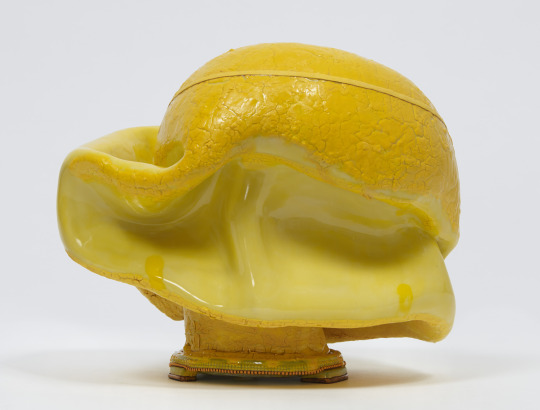
Fellowship Recipients and Finalists by Discipline and County of Residence:
Crafts/Sculpture
Sharif Bey (Onondaga)
Robert Bittenbender (Kings)
Kathy Butterly (New York)
Jack Elliott (Tompkins)
Hiroyuki Hamada (Suffolk)
Dave Hardy (Kings)
Valerie Hegarty (Kings)
Sophie Hirsch (Kings)
Jerome Johnson (Kings)
Robin Kang (Nassau)
Zaq Landsberg (Kings)
China Marks (Queens)
Melanie McLain (Queens)
Shari Mendelson (Schoharie)
Toshiaki Noda (New York)
Kambui Olujimi (Kings)
Peter Opheim (Kings)
Jim Osman (Kings)
Lina Puerta (New York)
Patrick Robideau (Niagara)
Diana Shpungin (Kings)
Elise Siegel (New York)
Kurt Steger (Kings)
Joanne Ungar (Kings)
Crafts/Sculpture Finalists
Jarrod Beck (Ulster)
Oasa DuVerney (Kings)
Panagiotis Mavridis (Kings)
Susan Meyer (Columbia)
Crafts/Sculpture Panelists
Mikhail Gubin (Queens)
Cal Lane (Putnam)
Ryan Sarah Murphy (Kings)
Armita Raafat (New York)
Kako Ueda (Kings)
Digital/Electronic Arts
Merche Blasco (Kings)
Jeremy Couillard (Queens)
João Enxuto and Erica Love (New York)*
LoVid (Suffolk)*
Melinda Hunt (Westchester)
Zohar Kfir (Kings)
Jen Liu (Richmond)
Amelia Marzec (Kings)
Eva and Franco Mattes (New York)*
Joseph Morris (Kings)
Ziv Schneider (Queens)
Pascual Sisto (Kings)
Christopher Woebken (New York)
Digital/Electronic Arts Finalists
Anthony Graves and Carla Herrera-Prats - Camel Collective (Queens)*
DeeDee Halleck (Ulster)
Mattia Casalegno (Kings)
Digital/Electronic Arts Panelists
Peter Burr (Kings)
Heather Bursch (Kings)
Moo Kwon Han (New York)
Gabriela Monroy (Kings/International)
Boryana Rossa (Onondaga)
Nonfiction Literature
Humera Afridi (New York)
Jennifer Baker (Queens)
Ava Chin (New York)
Mitchell Jackson (New York)
T Kira Madden (New York)
Alia Malek (Kings)
Joseph Osmundson (New York)
Brice Particelli (New York)
Ross Perlin (Queens)
Hugh Ryan (Kings)
Aurvi Sharma (New York)
Neda Toloui-Semnani (Kings)
Kelly Tsai (Kings)**
Alejandro Varela (Kings)
Katherine Zoepf (New York)
Nonfiction Literature Finalists
Brian Castner (Erie)
Lisa Chen (Kings)
Rong Xiaoqing (Queens)
Nonfiction Literature Panelists
Shahnaz Habib (Kings)
Abeer Hoque (Kings)
Annie Lanzillotto (Westchester)
Thaddeus Rutkowski (New York)
Eben Wood (Kings)
Poetry
Desiree C. Bailey (Queens)
Jennifer Bartlett (Kings)
Wo Chan (Kings)
Alan Davies (New York)
Joey De Jesus (Queens)
Betsy Fagin (Kings)
Jameson Fitzpatrick (Kings)
Harmony Holiday (New York)***
Jake Matkov (Kings)
Uche Nduka (Kings)
Allyson Paty (Kings)
Tommy Pico (Kings)
Jayson Smith (Kings)
Ann Stephenson (New York)
Bridget Talone (Queens)
Michelle Whittaker (Suffolk)
Samantha Zighelboim (New York)
Poetry Finalists
Ana Bozicevic (Kings)
Krystal Languell (Kings)
Asiya Wadud (Kings)
Poetry Panelists
Albert Abonado (Monroe)
Rosebud Ben-Oni (Queens)
Rachel McKibbens (Monroe)
Stacy Szymaszek (Kings)
Matvei Yankelevich (Kings)
Printmaking/Drawing/Book Arts
Richard Barlow (Otsego)
Alex Barry (New York)
Natalie Beall (Dutchess)
Thalia Chantziara (New York)
Amanda Church (New York)
Amy Cutler (Kings)
Terry Conrad (Saratoga)
Donna Diamond (Bronx)
Mark Dion (New York)
Mark Ferguson (Kings)
Johanna Goodman (Rockland)
Ellen Grossman (New York)
Takuji Hamanaka (Kings)
Amir Hariri (Queens)
Carla Rae Johnson (Westchester)
Cotter Luppi (Columbia)
Kymia Nawabi (Kings)
Susan Rostow (New York)
Jennifer Schmidt (Kings)****
Charlotte Schulz (Westchester)
Sean Sullivan (Ulster)
Dannielle Tegeder (New York)
Scott Teplin (Kings)
Printmaking/Drawing/Book Arts Finalists
Nicole Maloof (New York)
Debra Priestly (Ulster)
Printmaking/Drawing/Book Arts Panelists
Perry Angelora (Kings)
Gil Avineri (New York)
George Hrycun (Allegany)
Svetlana Rabey (New York)
Jen Ray (Queens)
* Collaborating Fellows
**Joanne Chen Fellowship: Kelly Tsai (Nonfiction Literature); the Joanne Chen Fellowship is awarded annually to a Taiwanese American artist residing in New York State
***Shelley Pinz Fellow: Harmony Holiday (Poetry)
****Deutsche Bank Americas Foundation Fellow: Jennifer Schmidt (Printmaking/ Drawing/Book Arts)
Click here for more information about the NYSCA/NYFA Artist Fellowship Program.
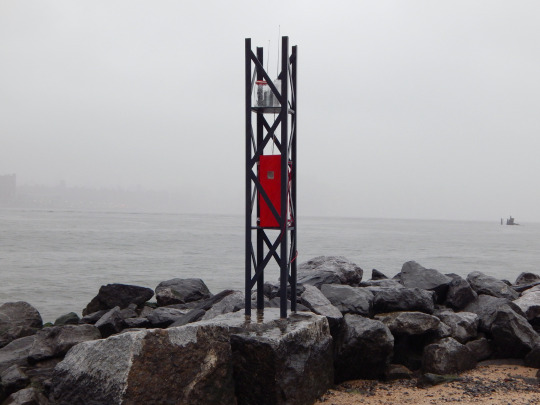
Funding Support
Major funding is also provided by the New York State Department of Cultural Affairs (DCLA). Additional funding is provided by the Lily Auchincloss Foundation, the Milton & Sally Avery Arts Foundation, Deutsche Bank Americas Foundation, and individual donors.

Images, from above: Terry Conrad (Fellow in Printmaking/Drawing/Book Arts ‘17), Photo Credit: PD Rearick; Kathy Butterly (Fellow in Crafts/Sculpture ‘17), Chaos Monkey, 2017, clay and glaze, Photo Credit: Alan Weiner; Amelia Marzec (Fellow in Digital/Electronic Arts ‘17), Weather Center for the Apocalypse: Weather Tower, 2016, Wood, glass, acrylic, electronics
7 notes
·
View notes
Text
Business of Art | Best Practices for Shipping and Handling Your Art
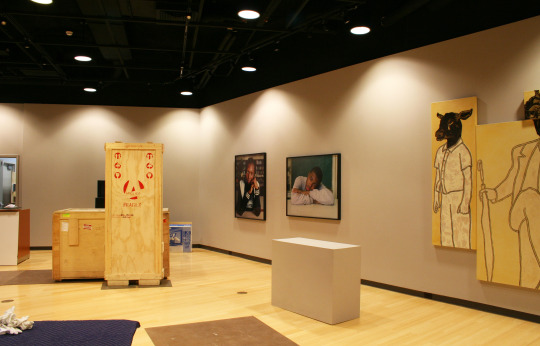
Jonathan Schwartz, President/CEO of Atelier 4, helps artists develop a framework for shipping and handling success.
The New York Foundation for the Arts (NYFA) is commemorating three decades of NYSCA/NYFA Artist Fellowships with the landmark traveling exhibition Artists as Innovators.
Atelier 4, one of the nation’s premier fine art logistics companies, is providing shipping support for the exhibition throughout the show’s run from Fall 2017 through Spring 2020. We spoke with President/CEO Jonathan Schwartz in the lead-up to the exhibition’s opening at SUNY Fredonia’s Cathy and Jesse Marion Art Gallery on February 1, 2019 (details below), and gained insights from the President/CEO on shipping and handling best practices for artists. Read on for Schwartz’s insights.
What to Consider When Shipping and Handling Your Work
In the process of shipping artwork, there are many complex stages that come before the work’s arrival to its final destination. In terms of “best practices,” the process is composed of several steps that are integral yet often overlooked.
My first recommendation is to ask yourself: When do I need these objects to reach their destination? Then, work backwards from there as you consider the following:
1. Loan agreements and insurance coverage. This should be sorted out as far in advance as possible of the date of pick-up.
2. The weight of your artwork. Weight can be a factor, and may necessitate specialized lifting equipment such as a gantry, forklift, block and tackle, etc., which require a higher level of expertise than simple art moving and handling.
3. Packaging and moving prep. What kind of preparation and packing does your object need in order to leave your studio? Does it require any specialized moving equipment? This will all depend on how you are transporting the object (i.e. truck, air, or sea) and how far away you are shipping your object. For example:
If it is riding with a qualified fine art-handling company (see ICEFAT.org for a list of reputable providers worldwide) via specialized fine art trucks, you might get away with a soft-pack solution.
If you’re using a consolidated shipment-sharing space with other works going to other places, a more robust wrap is needed. Keep in mind that you will pay a premium for anything you cannot stack or alter.
Any surface that cannot tolerate contact needs to float in a shadow box, collar, or travel frame.
Handling and transport via common carrier, air freight, or ocean vessel requires a sound crate or travel case.
4. Access at pick-up and drop-off. Consider the access you will have at both the pick-up and delivery locations (height and width of doorways, elevators, and stairwells; parking restrictions; and prohibited hours of entry).
5. Documentation. International travel requires documentation. If the forms and procedures seem daunting, entrust a reputable fine art logistics company with international experience. Here is a brief, and by no means exhaustive, list of some of the requirements:
Packing lists and invoices (commercial invoices are needed for definitive exports, like in the case of a sale; and pro forma invoices are for temporary exports, like in the case of an exhibition) are essential.
Personal or business information is required to arrange export or import entries.
The composition or medium of an object can require government agency permits such as a phytosanitary certificate (for plants and plant products), fish and wildlife (including feathers, shells, taxidermy, etc.), which is determined by the Convention on International Trade in Endangered Species (CITES).
There are also other laws in place, such as the Lacey Act (which helps prevent illegal trafficking of plant products), along with others you should research or speak to a fine arts logistics expert about.
Permits and internationally-recognized treaties such as ATA Carnet (an international customs document that permits the export and import of duty-free nonperishable goods for up to one year) have expiration dates. Keep this in mind when considering the length of exhibition tours.
See below for additional resources and further reading on import and export requirements:
CITES
USDA Animal and Plant Health Inspection Service
U.S. Fish and Wildlife International Affairs
Whether your art shipment is a single object or a mid-career survey, all of these steps are essential. Experienced artists are likely to do some combination of in-house arrangements paired with either commercial or fine art specialty transport assistance, and that can work just fine. If you are new at this, and your tolerance for mishaps and damages is minimal, you’d be well-advised to consult the experts.
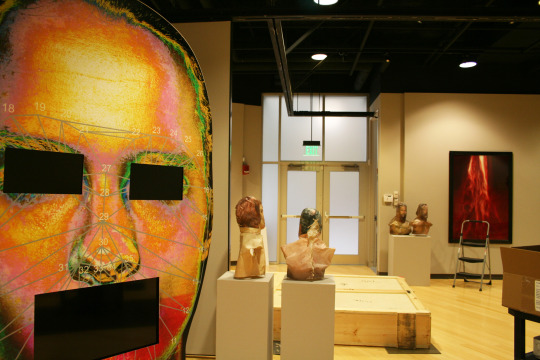
Artists as Innovators at SUNY Fredonia
Title: Artists as Innovators: Celebrating Three Decades of New York State Council on the Arts/New York Foundation for the Arts Fellowships
Opening Reception: February 1, 2019, 7:00 PM - 9:00 PM
Visiting Artist Lecture with Jonathan Katz: Thursday, February 21, 8:30 PM
Visiting Artist Lecture with Dread Scott: Thursday, February 28, 8:30 PM
Exhibition Dates: January 22 - March 10, 2019
Location: Cathy and Jesse Marion Art Gallery, Michael C. Rockefeller Arts Center, SUNY Fredonia, 280 Central Avenue, Fredonia, NY 14063
Exhibition Touring Schedule
Summer 2019: The Joseph C. and Joan T. Burke Gallery, SUNY Plattsburgh, May 24 - August 30, 2019, Opening TBD
Fall 2019: Paul W. Zuccaire Gallery, Stony Brook University, Dates and Opening TBD
Spring 2020: Westchester Community College Fine Arts Gallery, Westchester Community College, Dates and Opening TBD
NYSCA/NYFA Artist Fellowships are administered with leadership support from New York State Council on the Arts with the support of Governor Andrew M. Cuomo and the New York State Legislature.
Funding for Artists as Innovators: Celebrating Three Decades of New York State Council on the Arts/New York Foundation for the Arts Fellowships is provided in part by the National Endowment for the Arts (NEA) with shipping support from Atelier 4.

Find out more about the NYSCA/NYFA Artist Fellowship Program, a $7,000 unrestricted cash grant awarded to individual artists living and working in the state of New York.
Images: Artists as Innovators installation at the Cathy and Jesse Marion Art Gallery, Michael C. Rockefeller Arts Center, SUNY Fredonia, Courtesy SUNY Fredonia.
#events#exhibition#afp#nyscanyfafellows#nysca nyfa fellows#nyscanyfafellowship#nysca nyfa fellowship#artist fellowship#artistfellowship#shipping and handling#shipping#handling#business of art#artistsasinnovators#artists as innovators#jonathan schwartz#jonathanschwartz#businessofart
0 notes
Text
Introducing | NYSCA/NYFA Artist Fellowship Program Recipients and Finalists

NYFA has awarded $623,000 to 89 New York State artists.
The New York Foundation for the Arts (NYFA) has announced the recipients and finalists of the NYSCA/NYFA Artist Fellowship program, which it has administered for the past 32 years with leadership support from the New York State Council on the Arts (NYSCA). The organization has awarded a total of $623,000 to 89 artists throughout New York State in the following disciplines: Fiction, Folk/Traditional Arts, Interdisciplinary Work, Painting, and Video/Film. This year’s recipients range in age between 26 and 77. Fifteen finalists, who do not receive a cash award, but benefit from a range of other NYFA services, were also announced. A complete list of the Fellows and Finalists follows.
The NYSCA/NYFA Artist Fellowship Program makes unrestricted cash grants of $7,000 to artists working in 15 disciplines, awarding five per year on a triennial basis. The program is highly competitive and this year’s recipients and finalists were selected by discipline-specific peer panels from an applicant pool of 3,071. Since it was launched in 1985, the program has awarded over $31 million to more than 4,500 artists.
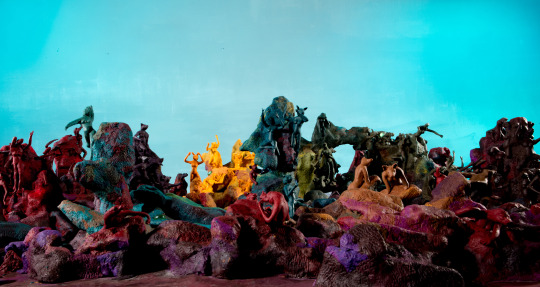
“Artists deepen humanity and help us to understand the world and each other through their work,” said Michael L. Royce, Executive Director, NYFA. “We’re proud to collaborate with NYSCA to offer unrestricted grants to artists of all disciplines across New York State to support their artistic visions,” he added.
“We recognize that at the heart of the arts is the individual artist,” said Mara Manus, Executive Director of the New York State Council on the Arts. “These grants provide artists in a multitude of disciplines with financial support so they can take risks and flourish in their work, fueling the creative capital of New York.”
Sejal Shah, a Fellow in Fiction from Rochester, NY, reflected on the award saying: “Receiving the NYSCA/NYFA Artist Fellowship means it is possible for me to teach less, worry (a little) less, and write more. It is allowing me to focus on the big picture and helps me to believe that what I am doing has value to someone other than me. As an artist, I feel freer to take risks with my work, to experiment, and to continue to write about gender, race, silence, and speech.”
Kim Brandt, a Fellow in Interdisciplinary Work from Queens, NY, shared the following about her fellowship: “Receiving a NYSCA/NYFA Artist Fellowship is a real gift—both a vote of confidence and a sigh of relief. On a practical level, it supports a continued commitment to my work by easing the financial burdens of its costs. For a contained stretch of time, I can pay for studio space and materials, take time away from my jobs, and travel for a residency with less worry and reduced stress. Yet to have my work recognized and acknowledged by NYFA and their panelist of arts professionals, peers, and colleagues, to be included in a roster of previous awardees whose work I’ve long admired and respected—this is the deeply meaningful support that doesn't run out once the last penny is spent. This kind of support feeds and fuels long past the fellowship period, and its value is immeasurable and unlimited.”

Fellowship Recipients and Finalists by Discipline and County of Residence:
Fiction Fellows
Caitlin Cass (Erie)
Diane Chang (Queens)
Martin Cloutier (Kings)
Dana Czapnik (New York)
Nicole Dennis-Benn (Kings)
Eric Gansworth (Niagara)
Susanna Horng (New York)
Naomi Jackson (Kings)
Swati Khurana (New York)
Lisa Ko (Kings)
Marie Myung-Ok Lee (New York)
Haifa Lakshmi Koleilat (Rockland)
Lissette J. Norman (Richmond)**
Bino A. Realuyo (Queens)
Mike Scalise (Kings)
Jennifer Sears (Kings)
Sejal Shah (Monroe)
Kelli Trapnell (Kings)
Fiction Finalists
YZ Chin (New York)
Adalena Kavanagh (Kings)
Yahaira Lawrence (Westchester)
Fiction Panelists
Roohi Choudhry (Kings)
Janet McNally (Erie)
Anne Panning (Monroe)
Edward Schwarzschild (Albany)
Cathie Wright-Lewis (Kings)
Folk/Traditional Arts Fellows
Douglas Barr (Richmond)
Danielle Brown (Kings)
Moris J Cañate (Queens)
Helen Taylor Condon (St. Lawrence)
William Crouse Sr. (Cattaraugus)
Wafa Ghnaim (Kings)
Zhong-hua Lu (Rensselaer)
Potri Ranka Manis (Queens)
Tashi D Sharzur (Techung) (Essex)
Jake Shulman-Ment (Kings)
Salieu Suso (Bronx)**
Folk/Traditional Finalists
Martin Macica (Saratoga)
Halyna Shepko (Ulster)
Alicia Svigals (New York)
Folk/Traditional Panelists
Mary Tooley Parker (Westchester)
Blanka Amezkua (Bronx)
Naomi Sturm (Richmond)
Elinor Levy (Dutchess)
Carrie Hill (Franklin)
Interdisciplinary Work Fellows
Noel W Anderson (Queens)
Kim Brandt (Queens)
A.K. Burns (Kings)
Tyler Coburn (Kings)
Ayana Evans (New York)
Allison Janae Hamilton (New York)
Kathy High (Rensselaer)
Sue Jeong Ka (New York)
Baseera Khan (New York)
Mary Mattingly (Kings)
Christie Neptune (Kings)
Ernesto Pujol (Columbia)
Elise Rasmussen (Kings)
Aki Sasamoto (Kings)
Kuldeep Singh (Kings)
Tiffany Smith (Kings)
Tattfoo Tan (Richmond)
Interdisciplinary Work Finalists
Keren Benbenisty (New York)
Kameelah Janan Rasheed (Kings)
Aida Šehović (New York)
Interdisciplinary Work Panelists
Matt Bua (Greene)
David Court (Ulster)
Glendalys Medina (New York)
Rachel Fein-Smolinski (Onondaga)
Jaimie Warren (Kings)
Painting Fellows
Samira Abbassy (New York)
Maria Berrio (Kings)
Gabe Brown (Ulster)
Tom Burckhardt (New York)
Ginny Casey (Kings)
Elizabeth Colomba (New York)
Lisa Corinne Davis (Kings)
Lydia Dona (New York)
Donise English (Dutchess)
Derek Fordjour (New York)*
Clarity Haynes (Kings)
Vera Iliatova (Kings)
Julian Kreimer (Kings)
Joel Longenecker (Dutchess)
Kathryn Lynch (Kings)
Sangram Majumdar (Kings)
Tracy Miller (Kings)
Patrick Neal (New York)
David Opdyke (Queens)
Paul Pagk (New York)
Luisa Rabbia (Kings)
Gretchen Scherer (Kings)
Emily Mae Smith (Kings)
Michael Stamm (Kings)
Amy Talluto (Ulster)
Leslie Wayne (New York)
Deborah Zlotsky (Albany)
Painting Finalists
Jordan Casteel (New York)
Clayton Schiff (Queens)
Don Voisine (Kings)
Painting Panelists
Julia Whitney Barnes (Dutchess)
Franklin Evans (New York)
Elliot Green (Columbia)
Sarah McCoubrey (Onondaga)
Mie Yim (Kings)
Video/Film Fellows
Abbesi Akhamie (Kings)
Jessica Beshir (New York)
Ira Eduardovna (Kings)
Fernando Frias de la Parra (Kings)
Brent Green (Ulster)
Devin Horan (Kings)
Haisi Hu (Kings)
Hannah Jayanti (Kings)
Steffani Jemison (Kings)
Ekwa Msangi (Kings)
Shayok Mukhopadhyay (Westchester)
Iva Radivojevic (Kings)
Jessie Jeffrey Dunn Rovinelli (Kings)
Lynne Sachs (Kings)
Fern Silva (Kings)
Sasha Wortzel (Kings)
Video/Film Finalists
Melanie Crean (Kings)
Case Jernigan (Kings)
Nikyatu Jusu (Kings)
Video/Film Panelists
Justin Ambrosino (Richmond)
Zia Anger (Columbia)
Shirley Bruno (Kings)
Megan Roberts (Tompkins)
Bhawin Suchak (Albany)
*Deutsche Bank Fellow
**Gregory Millard Fellows made with the support of the New York City Department of Cultural Affairs
Click here for more information about the NYSCA/NYFA Artist Fellowship Program.
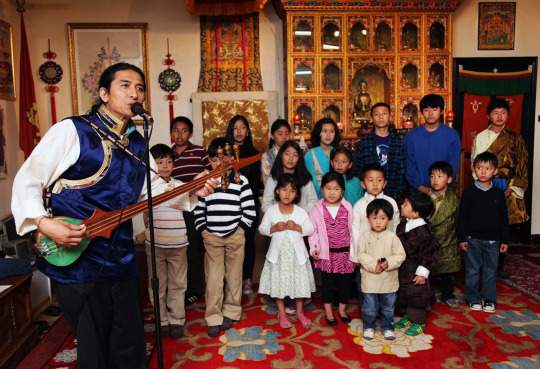
Funding Support
NYSCA/NYFA Artist Fellowships are administered with leadership support from New York State Council on the Arts with the support of Governor Andrew M. Cuomo and the New York State Legislature. Additional funding is also provided by the New York City Department of Cultural Affairs (DCLA), Deutsche Bank, the Milton & Sally Avery Arts Foundation, and individual donors.

Images, from above: Maria Berrio (Fellow in Painting ‘18); In a Time of Drought, 2016, collage with Japanese papers and watercolor paint, 60”x72”; Haisi Hu (Fellow in Video/Film ‘18), New York After Rain, 2017, claymation and cel animation (still); Kim Brandt (Fellow in Interdisciplinary Work ‘18), Untitled, 2014, Performance, Presented at The Kitchen, NYC, Photo Credit: Paula Court; Tashi D Sharzur (Techung) (Fellow in Folk/Traditional Arts ‘18), Semshae, Heart Songs, Performance for Tibetan children, Tibet House, NYC, 2013, Photo Credit: Kurt Smith
#afp#nyscanyfafellows#dcla#deutschebank#artistnews#announcements#nyscanyfafellowship#new york state council on the arts#newyorkstatecouncilonthearts#nysca#instagram
0 notes
Text
Apply Now | NYSCA/NYFA Artist Fellowship in Playwriting/Screenwriting

Quick tips for artists interested in applying for this $7,000 fellowship opportunity.
For the past 32 years, The New York Foundation for the Arts (NYFA) has awarded unrestricted cash grants of $7,000 to individual originating artists living in New York State and/or Indian Nations located in New York State. NYFA is accepting applications for 2019 NYSCA/NYFA Artist Fellowships in Architecture/Environmental Structures/Design, Choreography, Music/Sound, Photography, and Playwriting/Screenwriting now through January 23, 2019.
The Playwriting/Screenwriting category accepts work in the writing of stageplays, screenplays, teleplays, libretti, radio plays, and audio dramas. While librettists may apply in this category, no audio is accepted. Composers of music theater works are advised to apply separately for a NYSCA/NYFA Artist Fellowship in Music/Sound. All Playwriting/Screenwriting applications are pre-reviewed, giving the panel more time to review applicants’ Work Samples.
Quick Tips for Playwriting/Screenwriting Applicants:
In this category, you can submit up to 20 pages of Manuscript (12 pt. font), either in standard script format or double-spaced.
Your 20 pages can include more than one project or work. However, you should supply enough text to give the panel a clear sense of each piece. Alternatively, you can focus your Manuscript on a singular piece by including a few acts or scenes from that work.
Start your Manuscript off with a section that creates a strong sense of place or character. Your Manuscript does not necessarily have to begin from the first page of your writing.
Applications are reviewed anonymously in the initial panel review rounds, so do not include your name or CV anywhere in your Manuscript.
For more useful tips on preparing your Manuscript, check out our blog post on “The Art of the Application | Work Samples: Digital Images and PDF Manuscripts.”
Apply Now
Visit NYFA’s Submittable page to start your application.
For more information about the NYSCA/NYFA Artist Fellowship, visit our website, view our Fellowships FAQ, and download the application guidelines.
Applications close Wednesday, January 23, 2019 at 11:59 PM (EST).
Past Fellows
Recent distinguished NYSCA/NYFA Artist Fellows who have been recognized in this award category include:
Young Jean Lee, Playwriting/Screenwriting ’10
Jen Silverman, Playwriting/Screenwriting ’13
Lloyd Suh, Playwriting/Screenwriting ’04, ’16
Visit our website for a full list of Past Fellows.

NYSCA/NYFA Artist Fellowships are administered with leadership support from New York State Council on the Arts with the support of Governor Andrew M. Cuomo and the New York State Legislature.
Image: Lynn Nottage (Fellow in Playwriting/Screenwriting ’94,’00; Hall of Fame ’17) at NYFA’s 2017 Hall of Fame Benefit, Photo Credit: Carl Timpone/BFA.com
#afp#award opportunity#nyscanyfafellows#playwright#playwriting#screenwriter#nyscanyfafellowship#nysca nyfa fellowship#how to apply#applynow#announcements#application deadline#screenwriting#instagram
0 notes
Text
The Art of the Application | Work Samples: Video and Audio Files
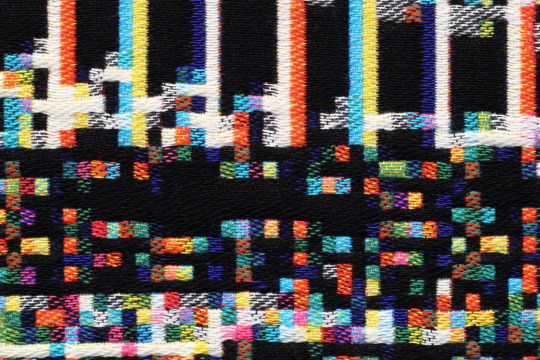
We’re providing pointers to help you submit your best application.
Applicants to the NYSCA/NYFA Artist Fellowship who are submitting audio or video work samples are invited to submit up-to 2 longer length work samples. In addition, applicants need to upload two 2-minute excerpts. Excerpts should be taken directly from your longer length work samples. Artists who work in short-form and only have work samples that are around two minutes in length are allowed to upload up-to four separate work samples.
Video Work Samples
Your video excerpts are viewed first by the panel. Therefore, the first 30 seconds of your two-minute excerpts become extremely important. Think about what you’d like the panel to see first, and begin your excerpts at the exact moment you want the panel to start watching. When preparing your excerpts, we advise that you do not submit trailers or snippet reels. Instead, use continuous footage that clearly conveys the sequence of your work.
If your video work samples are documentation of a performance or installation, make sure the recording is good quality, and that they are edited to best portray your practice. Consider the angle and distance of the camera before you start recording. If lighting and sound are particularly important to your work, ensure your videos capture them just as you intend.
Before you upload your work samples, you’ll need to format them correctly, keeping in mind that applications will be reviewed online. Here are two important reminders:
When encoding your videos, use the codec h.264, as it is preferred for web viewing, and will ensure that your videos upload and play correctly. Please note that ProRes codecs are not supported by our online viewing platform. A codec is a method for encoding, decoding, and compressing data, particularly video. There are many codec and container combinations but h.264 paired with .mov or .mp4 are preferred as they are supported by a wide range of media players with little loss of quality.
Double check formatting requirements in the Application Guidelines. If your video files are too large, you’ll need to compress them. You can do so using video editing software, such as Movie Maker, Adobe Premiere, Final Cut, iMovie, QuickTime, etc.
The most important thing to remember when submitting video work samples is to give yourself plenty of time before the deadline. It may take more time than you expect for your application to upload and submit. Save yourself some stress and prepare your files well in advance. Remember, you can always upload all your work samples and then save your application, returning at a later date to complete and submit it.
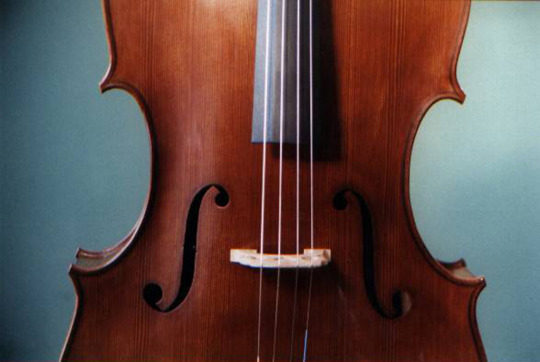
Audio Work Samples
Similar to applicants submitting video work samples, the panel will review your audio excerpts first in your application. Longer-length work samples will not be reviewed until subsequent rounds. Keep in mind that your excerpts do not necessarily need to start from the beginning of the work. Consider using any two minutes you think will spark the panel’s interest, and begin your excerpts from exactly where you want them to start listening.
If your practice includes non-traditional forms of music/sound making, is installation-based, or requires special equipment for listening, you should briefly note this in the work sample description. This section will appear after you upload a work sample to your online application. Using one to two sentences, you can describe the methodology, instruments, or technology used to create your work.
If your audio is from a live recording, make sure that the sound is clear and not washed out by background noise or poor acoustics. Your work samples are the most important part of your application, so take all the necessary steps to make a quality recording.
For more information about the NYSCA/NYFA Artist Fellowship, visit our website and view our Fellowships FAQ.
- Hannah Berry, Program Associate, NYFA Grants
NYSCA/NYFA Artist Fellowships are administered with leadership support from New York State Council on the Arts with the support of Governor Andrew M. Cuomo and the New York State Legislature.

Find out about additional awards and grants here. Sign up for our free bi-weekly newsletter NYFA News to receive announcements about future NYFA events and programs.
Images from top: Phillip Stearns (Finalist in Digital & Electronic Arts ’14) Fragmented Memory - Detail, Custom Software, Binary Data, Organic Cotton, 2014; Martin Macica (Finalist in Folk/Traditional Arts ’18), Cello, 1998, Maple, spruce, ebony, boxwood pegs
#application tips#applicationtips#artist opportunities#artistopportunities#nyscanyfafellowship#nysca nyfa fellowship#art of the application#artoftheapplication#business of art#hannah berry#instagram#choreography#music composition#music#sound art
0 notes
Text
The Art of the Application | Work Samples: Digital Images and PDF Manuscripts
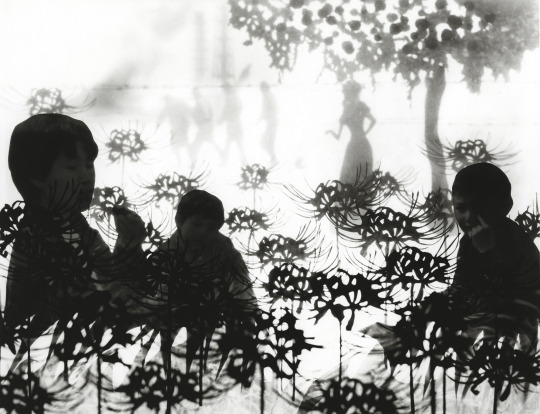
Applying for the NYSCA/NYFA Artist Fellowship? Here’s how your Work Sample can work for you.
In this Art of the Application post, we share tips for preparing your digital images and PDF manuscript Work Samples. Keep the recommendations below in mind as you compile and polish your application.
Digital Image Work Samples
Whether you choose to document your work yourself or hire a professional photographer, images must be high quality for your application to be competitive. Be sure to review all of your work samples before you submit to make sure they appear exactly as you intend.
Consider these questions when creating your digital files:
Is the color saturation and white balance correct when viewed on a monitor? You may need to edit your digital images on your computer before you submit. However, avoid retouching too much. Your image work samples should be true to the original works.
Are your images clear and in-focus? If you plan to document your work yourself, try to use a tripod and consistent lighting. These simple tactics will help ensure your images come out looking crisp. If you’re scanning physical photographs to create digital files, use a quality scanner with high resolution. Your images should remain clear, free of pixelation, and in-focus when projected at a large scale during the review process.
Have you followed the formatting requirements stated in the Application Guidelines? If your images are not properly formatted, they risk appearing pixelated or too small or large to be viewed on NYFA’s online review platform. You can easily edit and reformat the pixel dimensions and resolution using applications such as Photoshop, Preview, or Paint, among many others.
Are your image files named correctly? To ensure your images are viewed in a specific order, you need to make sure you name each of your Work Sample files correctly before uploading. You must begin each file name with a number 01 through 10, followed by the title of your work. During the NYSCA/NYFA Artist Fellowship review process, moderators will read aloud the title, date, dimensions, etc. of the first and sixth images.
There are countless online resources that will walk you through photographing and editing your work. The best recommendation is to start well in advance of the deadline.
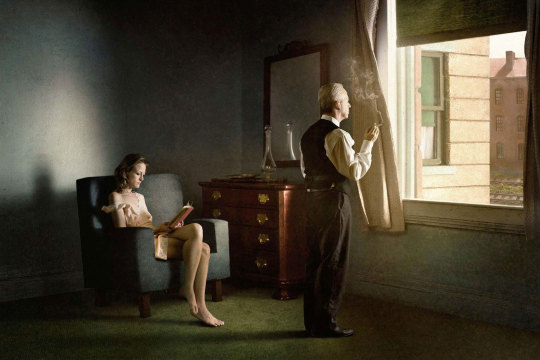
PDF Manuscripts
Literary applicants can submit up to 20 pages of manuscript as their Work Sample. Read through the Application Guidelines to ensure that your manuscript is formatted correctly for your discipline.
Here are a few pointers to help you prepare your PDF Manuscript:
You are allowed to include more than one project or work in your 20 page manuscript; however, you should supply enough text to give the panel a clear sense of each piece. Alternatively, you can focus your manuscript on a single piece, possibly including one or two acts or scenes from that one work. If you feel your work is best represented in fewer than 20 pages, you can submit less.
Start your Manuscript off with a section that creates a strong sense of place or character, providing enough dialogue or context to quickly engage your reader. Keep in mind that your manuscript does not necessarily have to begin from the first page of your work.
Do not include your Work Statement, Excerpt Explanation, or Cultural Statement in your PDF manuscript. This information will be available to panelists elsewhere in the application. Instead, use your 20 pages to unfold the storyline of your work.
There’s no one right answer on what to include in your manuscript. Just select work which you feel is your strongest, and choose excerpts that draw your audience in and leave them wanting more.
For more information about the NYSCA/NYFA Artist Fellowship, visit our website and view our Fellowships FAQ.
- Hannah Berry, Program Associate, NYFA Grants

NYSCA/NYFA Artist Fellowships are administered with leadership support from New York State Council on the Arts with the support of Governor Andrew M. Cuomo and the New York State Legislature.
Find out about additional awards and grants here. Sign up for our free bi-weekly newsletter NYFA News to receive announcements about future NYFA events and programs.
Images from top: Ayumi Tanaka (Fellow in Photography ‘16); Richard Tuschman (Fellow in Photography ‘16)
p.p1 {margin: 0.0px 0.0px 0.0px 36.0px; text-indent: -36.0px; line-height: 20.0px; font: 14.7px Arial; color: #000000; -webkit-text-stroke: #000000} span.s1 {font-kerning: none}
#application tips#applicationtips#artist opportunities#artistopportunities#nyscanyfafellowship#nysca nyfa fellowship#art of the application#artoftheapplication#business of art#hannah berry#instagram
1 note
·
View note
Text
The Art of the Application | The Excerpt Explanation & Technical Statement
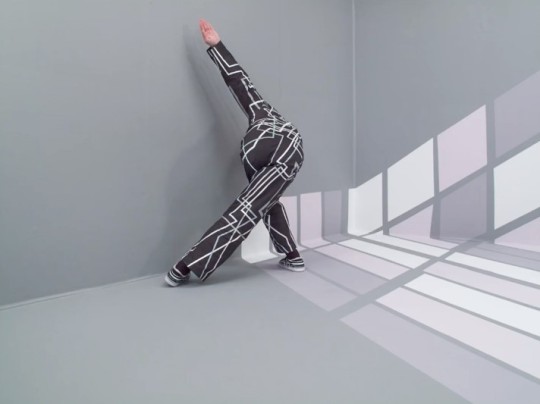
Shine in each aspect of your NYSCA/NYFA Artist Fellowship submission with the latest from the Art of the Application.
In this edition of The Art of the Application, we clarify what an Excerpt Explanation is and give pointers on what to include in a Technical Statement. Be sure to always read through the Application Guidelines for a full understanding of what you are required to submit in your application.
Excerpt Explanation
It may be a tongue twister, but it’s more simple than it sounds.The Excerpt Explanation is a 400-word statement that allows you to explain how the excerpted work sample(s) in your application relates to the entire original piece. For example, if you are a writer or work in a time-based medium, your work sample may not represent the entire original work. Use the Excerpt Explanation to expand upon the excerpt(s) you submitted and to unpack the various components and concepts of your practice.This statement should help to provide context for interpreting your work samples and gives you the chance to highlight information that may not be evident from your work samples.
Consider itemizing your Excerpt Explanation, discussing each submitted work sample individually. This will give the panel a clear and direct interpretation of your work.
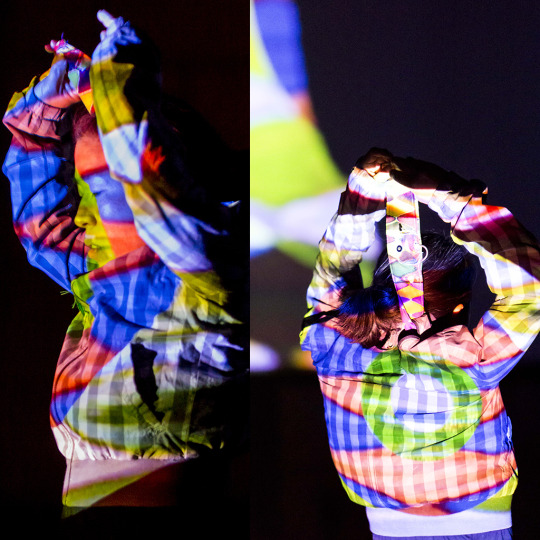
Technical Statement
Your Technical Statement is an optional 200-word statement that should describe the key technical aspects of your work samples. In this statement, talk about how the work was made, particularly if you used techniques which may not be self-evident.
For example:
Do you use a unique tool, instrument, or process to create your work?
Do you create your work in certain conditions, spaces, or settings?
If you’re working collaboratively, this is also a good opportunity to describe each artist’s role in creating or executing the work.
Depending on your practice, you can talk about the circumstances in which the viewer or audience normally would experience the work. If your work is performative or interactive, please explain that here. Be sure to highlight whether your work samples represent documentation of a performance, installation, or experience, as opposed to a single piece.
For more information about the NYSCA/NYFA Artist Fellowship, visit our website and view our Fellowships FAQ.
- Hannah Berry, Program Associate, NYFA Grants

NYSCA/NYFA Artist Fellowships are administered with leadership support from New York State Council on the Arts with the support of Governor Andrew M. Cuomo and the New York State Legislature.
Find out about additional awards and grants here. Sign up for our free bi-weekly newsletter NYFA News to receive announcements about future NYFA events and programs.
Images, from top: Ronald Amstutz (Fellow in Performance Art/Multidisciplinary Work ‘03 & Video/Film ‘15), LoVid (Fellows in Interdisciplinary ‘09, Digital/Electronic Arts ‘17)
#application tips#applicationtips#artist opportunities#artistopportunities#nyscanyfafellowship#nysca nyfa fellowship#nysca nyfa artist fellowship#art of the application#artoftheapplication#business of art#hannah berry#instagram
0 notes